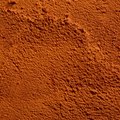

Stucco vs drywall free#
Got a tub of joint compound left over from a previous renovation? Feel free to substitute drywall mud for spackle for small drywall repairs. joint compound relatively straightforward. Spackle isn’t suited for this purpose because its quick-drying nature gives you less working time, which makes determining when to use spackle vs. With a little bit of finish work, the joint compound helps create a smooth surface with undetectable seams. A major difference between spackle and joint compound is the latter’s frosting-like consistency, whereas spackle is thicker.ĭuring drywall installation, contractors affix large sheets of gypsum board to a wall’s framing, apply drywall tape to the boards’ seams, and then cover the tape with joint compound. Joint compound (also known as “drywall mud” or simply “mud”) is comprised mainly of gypsum dust and can be bought in pre-mixed tubs, like spackle. Joint compound is most often used when hanging new drywall. Spackle dries more quickly with less shrinkage than joint compound-and that fast dry time (usually about 30 minutes) means you can sand and paint over the filled flaws almost right away. It’s used to fill small dings and dents, like nail holes, in walls. When making minor repairs to plaster or sheetrock, spackle is the way to go. Spackle, made of gypsum powder and binders, has a gooey paste-like consistency and is sold pre-mixed in tubs. Spackle is generally intended for repairing minor damage to drywall or plaster. If you’re about to tackle wall installation or repair, read on for the 411 on joint compound vs. The similarities end there, however, as they have various formulations that affect factors like dry time, shrinkage, and project scope. Is joint compound the same as spackle? Both popular putties are used in wall and ceiling repair and construction, and they look almost identical to the untrained eye.


 0 kommentar(er)
0 kommentar(er)
